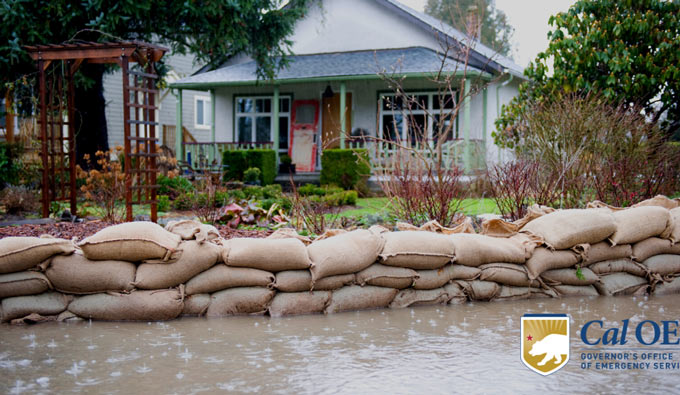
February 26, 2023 - During heavy and sustained rainfall, water can continue to build up and flooding can cause damage to homes and businesses. With proper preparation, you can reduce the risk of damage to your property. The California Governor’s Office of Emergency Services (Cal OES) would like to remind you how to use sandbags safely and properly.
Why Use Sandbags During a Flood?
Sandbags are commonly used during floods because they are an inexpensive and effective way to prevent water from entering a building. They can be used to create a barrier or to divert water away from the building. Sandbags are also easy to find and can be filled with sand or soil, making them readily available in emergency situations.
Sandbag Safety Tips
When using sandbags during a flood, it is important to follow these safety tips to protect yourself and your property:
- Wear Protective Gear: When filling sandbags, wear gloves to protect your hands from blisters and cuts, wear safety glasses or goggles to prevent getting sand in your eyes and wear a dust mask to avoid inhaling dust particles. If you have a pre-existing respiratory condition, such as asthma, you may need to avoid filling sandbags altogether.
- Fill Sandbags Properly: Sandbags should be filled no more than two-thirds full to allow room for the bags to be stacked and to prevent the bags from bursting. It is important to pack the sandbags tightly to create a strong barrier.
- Stack Sandbags Correctly: When stacking sandbags, make sure to stagger the bags, much like laying bricks. This will create a stronger barrier and prevent the bags from tipping over.
- Monitor the Situation: Monitor the water level and the condition of the sandbags regularly. If the water level rises rapidly or the sandbags start to shift or leak, it may be time to evacuate.
- Use Sandbags Appropriately: Sandbags should only be used to create a barrier around the perimeter of a building or to divert water away from the building. They should never be used to plug drains or to redirect water towards other properties.
Resources Available
Sandbags are provided by local government. Contact your city, county, fire department, or public works to find out where you can get sandbags in your area.
Source: Cal OES








